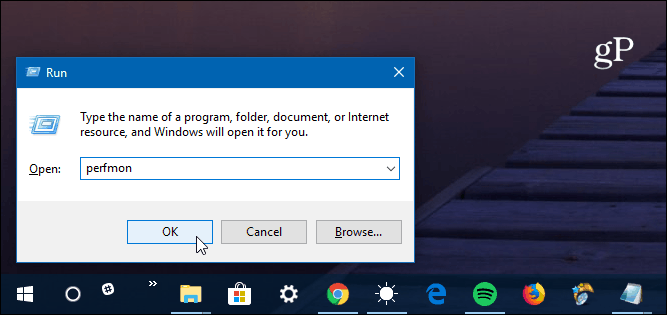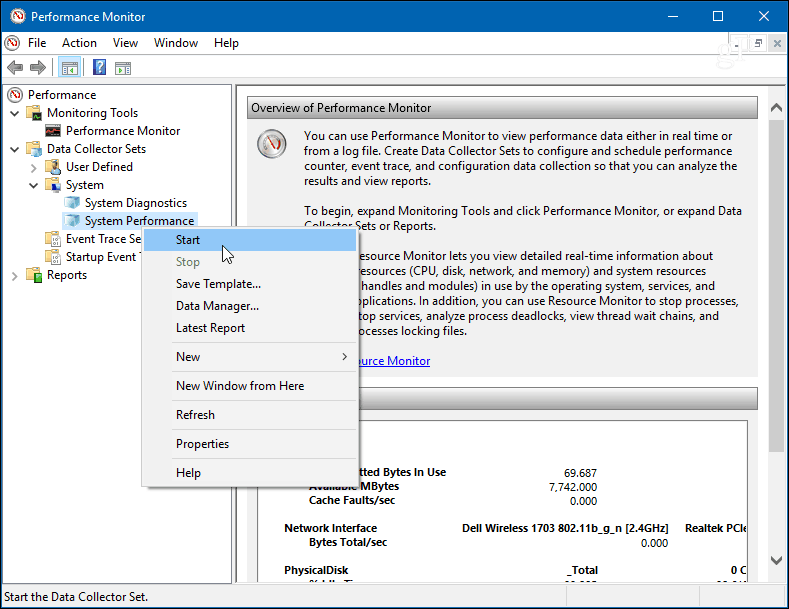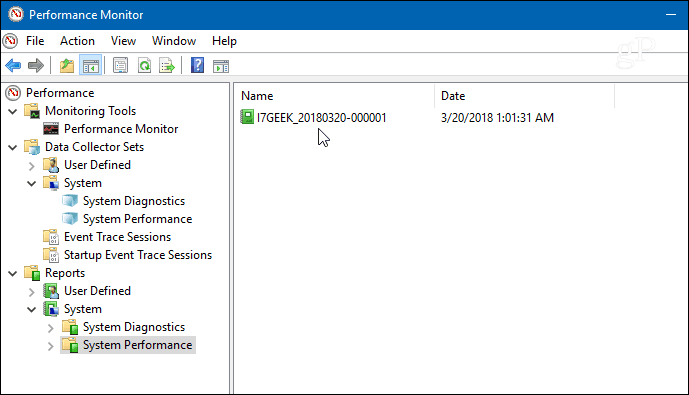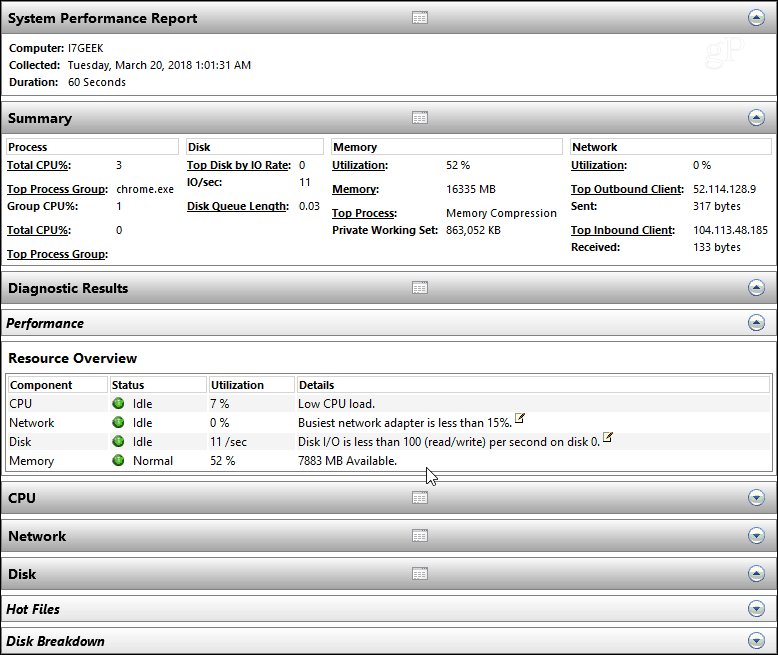How to Generate a Windows 10 System Performance Report

When it comes to troubleshooting a computer issue or just doing a checkup, Windows has a built-in performance report utility you can run.
When it comes to troubleshooting computer issues, there are a lot of tools that you can use. And, sometimes, you might want to do some preventive maintenance. The built-in Performance Monitor tool is a valuable troubleshooting component. The report has different categories to provide a summary of system processes, components, and diagnostic results. Here’s a look at where to find, run, and read your system’s report.
Run the System Performance Report
To start, hit Windows Key + R and type: perfmon and hit Enter or click OK.


From the left pane of the Performance Monitor app, expand Data Collector Sets > System > System Performance. Then right-click on System Performance and click Start.


That will kick off the test in Performance Monitor. It should only take about a minute to run, but your mileage will vary depending on your system. While it’s running, you will see an icon next to System Performance letting you know it’s running. When it’s finished, in the left pane, head to Reports > System > System Performance.


Go ahead and double-click the report to open it, and you’ll find it provides an overall system summary, and you can drill further down into components like Disk (local drive data), CPU, and Network. Each section provides a ton of information regarding all aspects of your PC.


Whether you are troubleshooting a specific issue or want to do some preventive maintenance, running a System Performance report on your Windows PC is a great place to start. It’s also a good way to create a history to keep track of issues over time.
There is a lot packed into the Performance Monitor tool. Over the coming weeks, we’ll be taking a closer look at some of its other features like collecting custom log file data, defining alerts, generating other reports, and more.
Have you run a System Performance test before? What are your favorite tools to help troubleshoot PC issues? In the comments below, let us know or hop in our Windows 10 Forums for additional discussions and troubleshooting advice.
3 Comments
Leave a Reply
Leave a Reply







David Higginbottom
March 22, 2018 at 4:43 pm
Thanks – or you could press the Windows key and enter Performance, select the app and it will run!
Don Liles
November 29, 2020 at 9:00 pm
is there a way like (win7),to boost performance in my windows 10.there is nothing in settings
Mark
January 28, 2023 at 9:49 am
I ran Performance on a brand new PC, fresh install of Win10, no apps running, Asus Prime Z690, brand new Samsung SSD, 32 Gb DDR4, and the reports show “Poor” or “Very Poor”.
What gives?